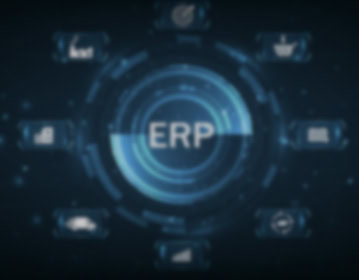
2020 Survey Results: Analysis of Global PeopleSoft Licensee Behavior
Many organizations are spending too much of their IT budget ─ as much as 90% ─ on daily operating costs to run and grow the business, leaving only 10% to fund transformation.[1] Continued overspending on expensive Oracle annual maintenance contracts for PeopleSoft ERP, while following the vendor’s forced scheduled of upgrades and updates simply to maintain full support, has become a dated model.
Licensees today have had to adapt to significant changes in the Oracle PeopleSoft support services model, where currently every major PeopleSoft ERP release except PeopleSoft 9.2 is no longer fully supported by Oracle — and yet there are no plans for PeopleSoft 9.3 on Oracle’s current roadmap.[2]
The result is that many licensees are seeing the amount of new value they receive from support decrease, while costs continue to increase. According to Gartner, “This is leading many organizations to seek lower-cost third-party support options.”[3]
2020 Global Survey of PeopleSoft Licensees
In partnership with IDG, Rimini Street recently conducted a global survey of PeopleSoft licensees to gather data and insight into the major challenges faced and strategies applied to adapt to the current Oracle ERP support model. The survey revealed several key insights; three are highlighted here.
Insight 1: Many survey respondents (PeopleSoft licensee IT organizations) are frustrated with ongoing high maintenance costs and poor service quality.
56% of respondents indicated frustration with the high cost of PeopleSoft maintenance from Oracle; 43% indicated frustration with poor service quality from Oracle for PeopleSoft.
Recommendation:
Assess the value you are receiving for your current annual maintenance and support fees. You may be continually spending more for less support and less value. Third-party support can help you to save up to 90% in total support costs for PeopleSoft while receiving highly responsive and complete ERP support compared to Oracle Premier Support.
Insight 2: The primary driver to upgrade, for those running versions earlier than PeopleSoft 9.2, is support.
Although 97% of survey respondents report that their current PeopleSoft ERP release meets their business needs, 44% have definite plans to upgrade to PeopleSoft 9.2. The primary motivation for the upgrade is support rather than access to new features or functional enhancements.
Recommendation:
Craft a Business-Driven IT Roadmap designed for your business, not driven by the needs of the vendor, and identify where you can get the best ERP support for the best price in order to help fund crucial digital transformation. When considering upgrading PeopleSoft to 9.2, assess whether it will help reduce costs, increase revenue, or improve competitive advantage versus maintaining the current ERP. If the value to the business is not compelling, you might have a better alternative moving to third-party support where you can save now and still upgrade later.
Insight 3: PeopleSoft licensees continue to actively seek ways to extend the useful life of their existing ERP implementation.
Cloud hosting platforms continue to gain traction, with 87% of survey respondents reporting that they are currently running, moving to, or evaluating infrastructure as a service (IaaS). Licensees also have high interest in software as a service (SaaS) applications, with 77% of respondents evaluating, actively moving to, or having already replaced some of their Oracle ERP with SaaS.
Recommendation:
When considering a move to the cloud, begin with IaaS hosting and combine with third-party support for immediate and sustained CAPEX and OPEX savings and ROI at a low risk. This lets you preserve your existing PeopleSoft investments without reimplementing and improve IT agility through better support and simplified IT infrastructure operations. Then evaluate adding best-in-class SaaS when the business case that supports it goes beyond temporary cloud credits or discounts that will expire.
Third-Party Support Puts You Back in Control of Your PeopleSoft Roadmap
Regardless of your PeopleSoft ERP release and whether your ERP is internally deployed, cloud-based, or hybrid IT, switching to independent, third-party support from Oracle PeopleSoft support services can save up to 90% on total support costs and help extend the life of your current, stable ERP. There are also no required upgrades, updates, or migrations — potentially for 15 years or more — which can help put you back in control of when and how to innovate and grow your PeopleSoft applications as part of your overall IT strategy and make it possible to break free of Oracle’s vendor-dictated timetable and high ongoing annual costs.
For further insights and recommendations, please read the complete 2020 global PeopleSoft survey research report.
[1] Gartner, “IT Key Metrics Data 2020: Executive Summary” December 18, 2019.
[2] https://www.oracle.com/us/assets/lifetime-support-applications-069216.pdf (accessed Dec. 10, 2020) and http://www.oracle.com/us/support/library/057419.pdf (accessed Dec. 10, 2020)
[3] Gartner Predicts 2020: Negotiate Software and Cloud Contracts to Manage Marketplace Growth and Reduce Legacy Costs, published 18 December 2019 – ID G00463732




